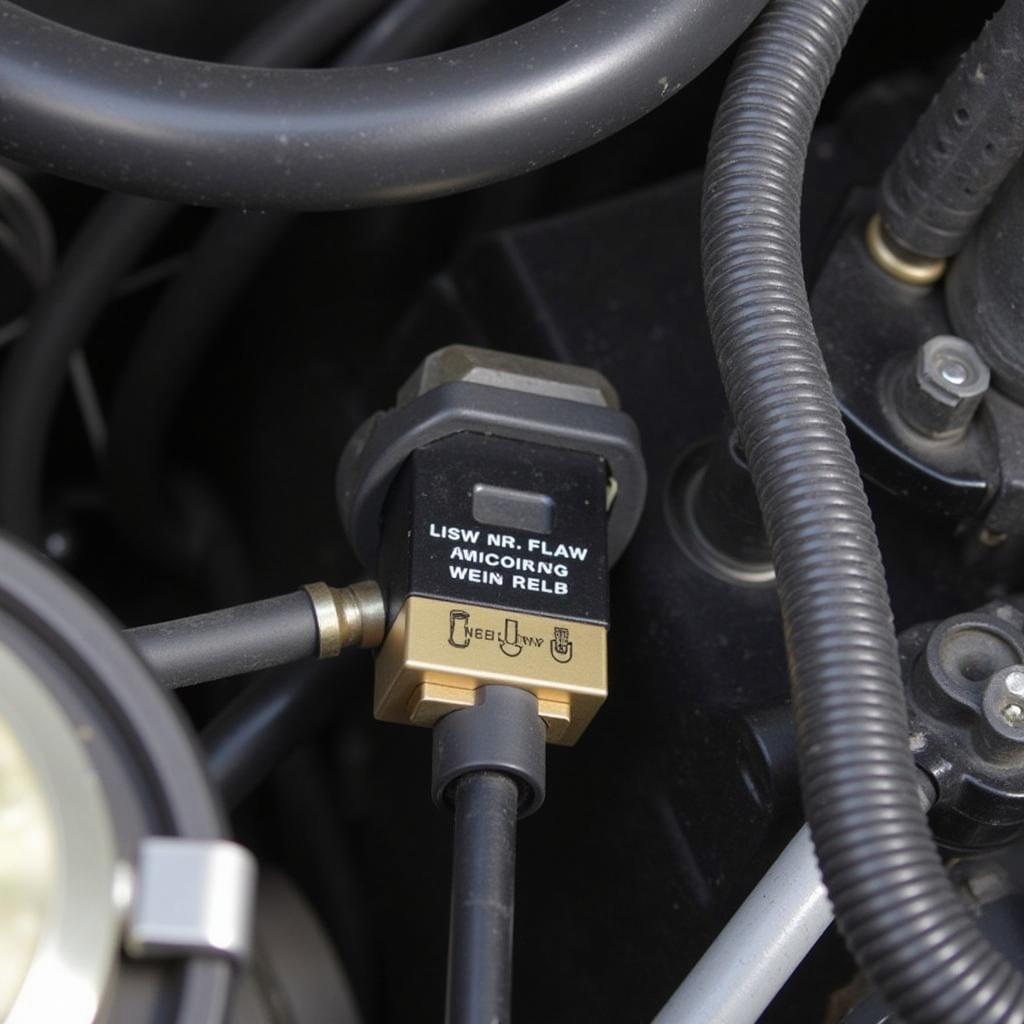Car Diagnostic Engine Management Sensors are the unsung heroes of your vehicle’s performance. These small but mighty components constantly monitor your engine’s vital signs, feeding crucial data to the Engine Control Unit (ECU). This information allows the ECU to adjust fuel injection, ignition timing, and other parameters for optimal performance, fuel efficiency, and emissions control. Understanding these sensors is key to maintaining a healthy and efficient engine. After reading this, you may be interested in learning more about a diagnostic test on a car.
Decoding the Role of Engine Management Sensors
Engine management sensors act as the eyes and ears of your car’s computer system. They gather data on various engine parameters, such as temperature, pressure, and air/fuel mixture. Without these sensors, your engine would be operating blind, leading to potential performance issues, increased emissions, and reduced fuel economy. Modern vehicles rely on a complex network of these sensors to ensure smooth and efficient operation.
Key Players: Essential Car Diagnostic Engine Management Sensors
Several crucial sensors contribute to the seamless functioning of your engine. These include:
- Mass Air Flow (MAF) Sensor: Measures the amount of air entering the engine, allowing the ECU to calculate the correct fuel delivery.
- Manifold Absolute Pressure (MAP) Sensor: Monitors the pressure inside the intake manifold, providing data on engine load and throttle position.
- Oxygen (O2) Sensor: Measures the amount of oxygen in the exhaust gases, helping the ECU adjust the air/fuel mixture for optimal combustion and emissions control.
- Coolant Temperature Sensor (CTS): Measures the engine coolant temperature, influencing fuel injection and ignition timing, particularly during cold starts.
- Crank Position Sensor (CKP): Determines the position and speed of the crankshaft, essential for ignition timing and fuel injection synchronization.
- Cam Position Sensor (CMP): Monitors the position of the camshaft, allowing the ECU to control valve timing and fuel injection sequencing.
- Throttle Position Sensor (TPS): Measures the position of the throttle plate, indicating how much air is being allowed into the engine.
These sensors work in concert to provide a comprehensive picture of engine operation, enabling the ECU to make precise adjustments for optimal performance.
 MAF Sensor in a Car Engine
MAF Sensor in a Car Engine
Common Sensor Problems and Symptoms
Malfunctioning engine management sensors can lead to a range of drivability issues. Some common symptoms include:
- Check Engine Light illumination
- Reduced fuel economy
- Rough idling
- Hesitation or stumbling during acceleration
- Increased emissions
- Difficulty starting
If you experience any of these symptoms, it’s crucial to have your vehicle diagnosed by a qualified technician. They can use a car diagnostic test kit to pinpoint the faulty sensor and recommend the necessary repairs.
Diagnosing Faulty Sensors: What to Expect
Diagnosing car diagnostic engine management sensor problems typically involves using a specialized scan tool to retrieve diagnostic trouble codes (DTCs) from the ECU. These codes provide valuable clues about the nature of the problem. A qualified technician will then interpret these codes, perform further tests, and identify the faulty sensor.
 Diagnostic Scan Tool in Use
Diagnostic Scan Tool in Use
What is the average cost for a car diagnostic test?
Knowing the average cost for a car diagnostic test can help you budget for potential repairs. While costs can vary, it’s a crucial step in identifying and resolving sensor issues.
Maintaining Your Engine Management Sensors
While engine management sensors are generally durable, they can eventually wear out or fail. Regular maintenance, such as keeping the engine clean and free of debris, can help prolong their lifespan. Additionally, addressing any underlying engine problems promptly can prevent further damage to the sensors.
“Regularly checking and maintaining your engine management sensors is a small investment that can save you from costly repairs down the road,” advises John Smith, ASE Certified Master Technician.
Conclusion: Keeping Your Engine Running Smoothly with Car Diagnostic Engine Management Sensors
Car diagnostic engine management sensors are essential for the health and performance of your vehicle. Understanding their function and recognizing the symptoms of faulty sensors can help you maintain a smooth-running and efficient engine. Regular maintenance and prompt diagnosis are key to preventing costly repairs and maximizing your vehicle’s lifespan. If you need assistance, having a car diagnostic test fulford road cowdenbeath can be a good option. Perhaps you are also interested in a car diagnostic tester for sale.
FAQ
- What are the most common symptoms of a failing engine management sensor? Common symptoms include a check engine light, reduced fuel economy, rough idling, hesitation, and increased emissions.
- How are faulty engine management sensors diagnosed? Diagnosis typically involves using a scan tool to retrieve diagnostic trouble codes (DTCs) from the ECU.
- Can I replace an engine management sensor myself? While possible, it’s generally recommended to have a qualified technician perform the replacement.
- How often should engine management sensors be replaced? Sensors are typically replaced as needed when they fail or show signs of malfunctioning.
- How can I prevent engine management sensor problems? Regular engine maintenance and addressing any underlying engine issues can help prevent sensor problems.
- What is the role of the ECU in relation to engine management sensors? The ECU uses data from the sensors to adjust engine parameters for optimal performance and efficiency.
- Why is it important to address engine management sensor issues promptly? Ignoring sensor problems can lead to further damage to the engine and more costly repairs.
Common Scenarios and Questions:
- Scenario: My car is hesitating during acceleration. Possible Cause: A faulty Mass Air Flow (MAF) sensor or Throttle Position Sensor (TPS).
- Scenario: My check engine light is on and my fuel economy has decreased. Possible Cause: A faulty Oxygen (O2) sensor or Coolant Temperature Sensor (CTS).
- Scenario: My car is idling roughly. Possible Cause: A faulty MAP sensor, Idle Air Control (IAC) valve, or spark plugs. (While spark plugs aren’t sensors, they can cause similar symptoms).
Further Exploration:
You might also be interested in learning more about specific diagnostic trouble codes (DTCs) and their meanings. Researching specific sensor types and their functions can also be beneficial.
Need Help?
Contact us via WhatsApp: +1(641)206-8880, or Email: [email protected]. Our 24/7 customer support team is ready to assist you.

Leave a Reply